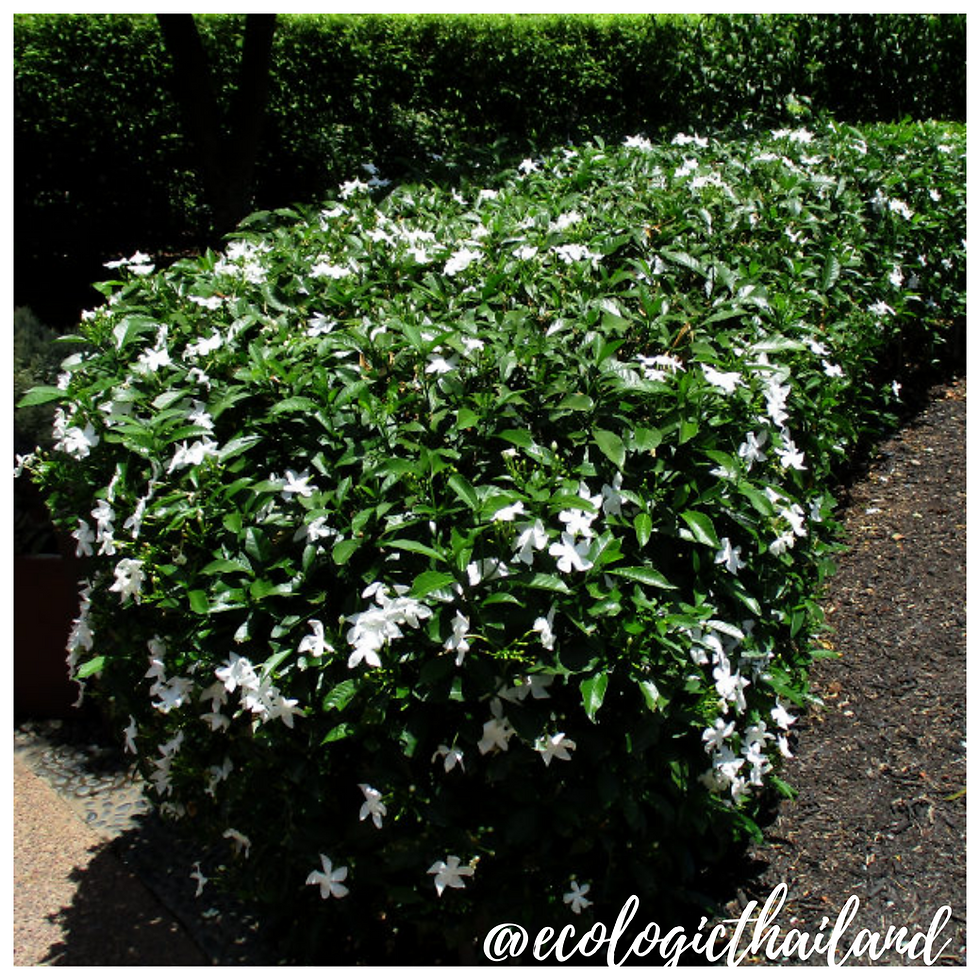Guava
- Eco-Logic Resort
- Apr 24, 2021
- 3 min read
Updated: May 4, 2021
Farang | ฝรั่ง | Psidium guajava
Family: Myrtaceae - Genus: Psidium

There are some guava trees in Paksong area, they can be found alongside the road and near the houses.
Guava, also know as the common guava or apple guava, is an evergreen shrub or small tree.
Guava is a common tropical fruit, the most frequently eaten species, and the one often simply referred to as "the guava", is the apple guava.
The name “Fa-rang” in Thai refers to guava being introduced into the Thai region via European traders in the 17th century.
Guava trees have tough dark leaves that are opposite, simple, elliptic to ovate, and 5–15 centimeters long. The flowers are white, with five petals and numerous stamens.
Thai guavas are generally the size of a softball with apple green skin that can range from bumpy to smooth. The flesh is white with pale yellow seeds and tends to be drier than the pink type of guavas. Thai guavas are only mildly sweet and have very little fragrance. The crunchy flesh and hard seeds are both edible.
The fruits are many-seeded berries, usually 4 to 12 centimeters long, are round or oval depending on the species. They have a pronounced and typical fragrance, similar to lemon rind but less sharp. The outer skin may be rough, often with a bitter taste, or soft and sweet.
The harvest season of the guava fruit starts in April.

THE TREE
Guava, also know as the common guava or apple guava, is an evergreen shrub or small tree.
Guava is a common tropical fruit, the most frequently eaten species, and the one often simply referred to as "the guava", is the apple guava.
The name “Fa-rang” in Thai refers to guava being introduced into the Thai region via European traders in the 17th century.

THE LEAVES
Guava trees have tough dark leaves that are opposite, simple, elliptic to ovate, and 5–15 centimeters long.

THE FLOWERS
The flowers of the guava tree are white, with five petals and numerous stamens.

THE FRUIT
Thai guavas are generally the size of a softball with apple green skin that can range from bumpy to smooth. The flesh is white with pale yellow seeds and tends to be drier than the pink type of guavas. Thai guavas are only mildly sweet and have very little fragrance. The crunchy flesh and hard seeds are both edible.
CULINARY USES
Guava is an edible fruit, and can be eaten raw or cooked.
In Thailand the guava is eaten raw, typically cut into quarters or eaten like an apple; it is also eaten with a pinch of salt and pepper, chili powder.
The guava can also be shredded and used in SomTam salads, together with green papaya or as a substitute for papaya..
Guava juice is popular in many countries.
The fruit is also often included in fruit salads.
Because of its high level of pectin, guavas are extensively used to make candies, preserves, jellies, jams, and marmalades.
NUTRITION
Guavas are rich in dietary fiber and vitamin C, with moderate levels of folic acid (nutrition table). Low in calories per typical serving, and with few essential nutrients, a single common guava fruit contains 257% of the Daily Value (DV) for vitamin C .
TRADITIONAL MEDICINAL USE OF NEEDLE FLOWER
NOTE: please take advice from a doctor if you are planning to use herbal medicine.
Guava has been used in traditional medicine by many cultures throughout Central America, the Caribbean, Africa, and Asia.
It is used for inflammation, diabetes, hypertension, caries, wounds, pain relief, fever, diarrhea, rheumatism, lung diseases, and ulcers.
INTO THE WILD: a down to earth experience

For guests and visitors to Paksong we organize weekly tours "The Edible Forest" and Foraging weekends: Into the Wild. We work with local guides to take you in the jungle of Paksong. After foraging, we will cook a meal with the ingredients, using bamboo together with you!
Come and join and learn about the abundance of food that nature gives us!
INTO THE WILD!


















Comments